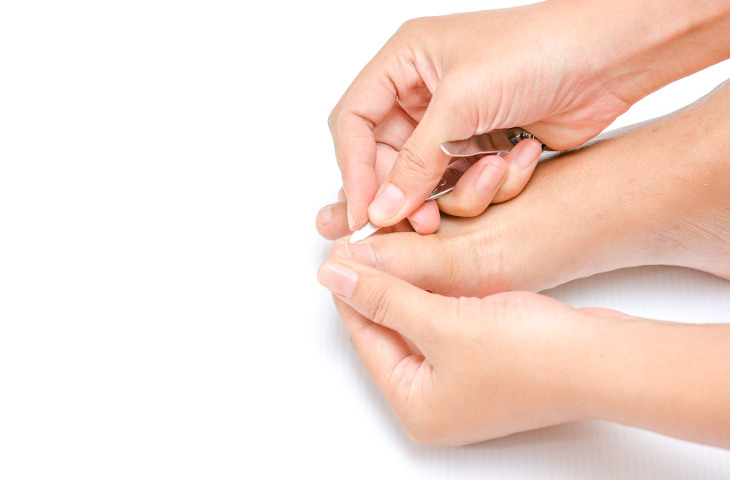DR. JOSEPH YEARGAIN, DPM - DALLAS, TX
Common Questions
- What is an ingrown toenail?
- How do I know if I have it?
- How does it happen?
- How can I prevent them?
- Will it go away on its own?
- How will Dr. Yeargain treat it?
- What happens after treatment?
- Will my ingrown toenail come back?
- Can it be dangerous?
Contact Us

Ingrown toenails are one of the most common podiatric concerns. When you have an ingrown toenail, it’s important to see a specialist such as Dr. Yeargain to avoid infection and minimize damage to the nail during treatment. Dr. Yeargain focuses on not only restoring functionality but preserving cosmetics—he wants his patients to heal as fast as possible while causing minimal disruption to appearance and minimal interference to everyday lives.
When you visit Yeargain Foot & Ankle for this routine procedure, Dr. Yeargain is able to provide same-day treatment. You’ll get back on your feet, looking and feeling better before you know it.
COMMON QUESTIONS ABOUT INGROWN TOENAIL
What is an ingrown toenail?
A toenail becomes ingrown when it starts growing into the skin of the toe. Instead of growing straight and above the skin, the nail will curve into the skin and become embedded in it. Ingrown toenails may cause quite a bit of pain and risk causing a more severe infection if not treated early. Ingrown toenails can happen to any toe, but will most frequently be found on the big toe.
How do I know if I have an ingrown toenail?
Ingrown toenails are easy to spot and diagnose—the skin will appear as covering the toenail and will likely become red, swollen, and firm. It might be extremely painful to touch, and fluid might build up around the toe.
How does an ingrown toenail happen?
Ingrown toenails are most commonly caused by genetics. People with more sweaty feet or people with thicker nails, such as older patients, are more prone to getting ingrown toenails. Cutting toenails too short or at an angle, wearing footwear which puts a lot of pressure on the toes, and practicing poor foot hygiene will increase the risk of getting an ingrown toenail. Additionally, using the feet for athletic activities such as ballet, football, kickboxing, or soccer can increase toenail damage and the risk of an ingrown toenail, and pregnancy can cause swelling which can lead to ingrown toenails.
How can I prevent ingrown toenails?
To prevent future ingrown toenails, be sure to wear shoes that fit properly. When trimming toenails, use a clean, sharp nail trimmer to trim the nails with the natural curvature of the toe and make sure to avoid trimming too short.
Will an ingrown toenail go away on its own?
It is possible, however, not common for an ingrown toenail to heal itself. When you notice an ingrown toenail is present, it’s best to see a doctor as soon as possible to avoid pain and/or infection. Do not attempt to cut the ingrown part of the toenail yourself, as it may make the problem worse or cause infection.
How will Dr. Yeargain treat an ingrown toenail?
If you visit Dr. Yeargain’s office with an ingrown toenail, he can perform the treatment same day to have you back and fully functioning as soon as possible. However, often patients like to schedule the treatment for when they have a couple days off of work to recover. Additionally, if the ingrown toenail is infected, you might need antibiotics prior to treatment.
To start, Dr. Yeargain will give two shots to numb the toe, then he will clean up the toenail and trim the edges back. Next, he will use a tiny knife to cut off the smallest possible part of the nail to still keep the functionality but remove the ingrown portion. While some offices remove the entire toenail during this procedure, Dr. Yeargain focuses on retaining as much nail as possible for his patients.
Next, Dr. Yeargain will put a little chemical on the affected corner of the nail so that it doesn’t grow back again. This means that the toenail will still look and feel normal, but the portion which curves into the skin will no longer be there.
Occasionally, if a patient has an important event to attend or is unable to go through full recovery, Dr. Yeargain will do a temporary procedure in which the nail is trimmed but not killed permanently. After this quick fix, the pain should resolve, but the ingrown toenail can potentially—but not always—come back.
What happens after treatment?
The toe will usually be sore for a couple of days post-treatment and typically takes about three weeks to fully heal after that. You will need to soak the foot and change the dressings once per day—Yeargain Foot & Ankle will have all the dressing material available in a kit for you, so you’re not running around to pharmacies post-treatment.
Two weeks after the procedure, you will have a follow-up appointment with Dr. Yeargain to check on the treated area.
Will my ingrown toenail come back?
Some patients are genetically predisposed to getting ingrown toenails, while others get them from the types of shoes they are wearing or the types of activities they are doing. Depending on your unique circumstance, ingrown toenails may unfortunately come back. Dr. Yeargain will do a full assessment of your case and make recommendations for any lifestyle changes which might decrease the risk of continued ingrown toenails.
Can an ingrown toenail be dangerous?
Ingrown toenails can be extremely painful if not treated and may also become infected. Ingrown toenail removal procedures are safe, quick, and effective. Dr. Yeargain is specially qualified to treat ingrown toenails, and can speed up his patients recovery by removing the minimal amount of toenail while bringing it back to full functionality.
Do you need treatment for your ingrown toenail? Call Dr. Yeargain of Yeargain Foot & Ankle, located in Dallas, TX, at 214-824-3851 to schedule an appointment!
